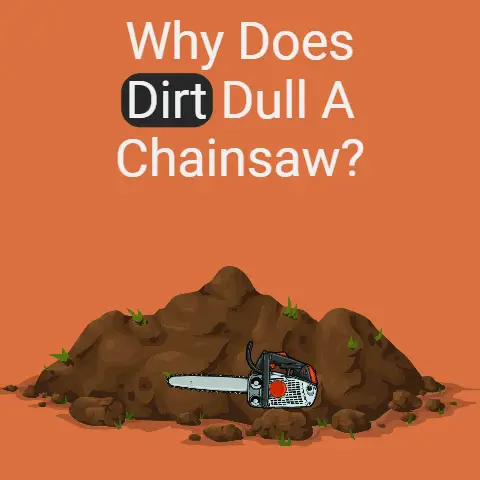How to Be a Chainsaw Hero (5 Tips to Impress)
How to Be a Chainsaw Hero (5 Tips to Impress)
Ever watched someone wield a chainsaw with such skill and thought, “I wish that was me”? Well, you’re in the right place. There’s something undeniably thrilling about mastering a chainsaw. The best option? With the right guidance and some practice, you too can become a chainsaw hero. Here are five tips to not just impress but also ensure you handle that chainsaw with finesse and safety.
My Journey to Chainsaw Mastery
Let me give you a glimpse into my journey. The first time I held a chainsaw, I was standing in my grandfather’s backyard, surrounded by towering trees. My grandfather, a seasoned lumberjack, handed it to me with a knowing smile. It felt heavy, both literally and figuratively. That moment marked the start of my adventure in becoming a chainsaw expert.
I remember the first cut vividly—it was nerve-wracking. My hands were sweaty inside the gloves, my heart raced, but the moment the chain bit into the wood, I felt an incredible rush. Over the years, that initial anxiety transformed into confidence and eventually mastery. With guidance from seasoned pros and countless hours of practice, I learned not just the technical skills but also the art of reading wood and understanding nature’s nuances.
Tip 1: Safety First, Always
You can’t be a hero if you’re not safe. Safety is the cornerstone of any chainsaw operation. Let’s dive deeper into what being safe really means when operating this powerful tool.
Equipment You’ll Need
It might seem excessive, but trust me; proper equipment can save your life.
- Chainsaw Chaps: These are made from protective materials designed to stop the chain from cutting through in case of contact. They’re like armor for your legs.
- Helmet with Face Shield and Ear Protection: A must-have for protecting your head from falling debris and saving your ears from the loud noise.
- Gloves: Anti-vibration gloves help reduce fatigue during extended use.
- Steel-Toed Boots: Essential for foot protection against accidental drops.
- First-Aid Kit: Always have this nearby because accidents can happen even to the best of us.
Important Safety Callout: Never operate a chainsaw without wearing the full complement of safety gear. It’s not just about protecting yourself; it’s about setting an example for others who may be watching or working alongside you.
Safety Habits to Develop
- Conduct a Pre-Use Inspection: Before each use, inspect your chainsaw for any signs of wear or damage.
- Clear Your Work Area: Remove any potential trip hazards and ensure you have an escape route when felling trees.
- Stay Alert: Fatigue can impair your judgment and reaction times. If you’re tired, take a break.
- Communicate: If you’re working with others, establish clear signals and keep each other informed of your movements.
- Avoid Alcohol or Drugs: Operating under the influence is not only illegal but extremely dangerous.
Tip 2: Know Your Chainsaw
Getting intimately familiar with your equipment is crucial. Each chainsaw has its quirks, and knowing them can make all the difference.
Prerequisite Knowledge
- Read the Manual: Sounds basic, but it’s crucial. The manual contains important information specific to your chainsaw model.
- Understand Parts: Know your guide bar, chain tensioner, chain brake, throttle lock, and other components.
Sequential Steps
- Check Fuel & Oil Levels: Make sure they’re topped up before starting. Running out of fuel mid-cut can be dangerous.
- Inspect the Chain: Look for damage or wear that could cause it to snap or derail.
- Test the Chain Brake: This safety feature is designed to stop the chain if kickback occurs.
- Check Tension: A loose chain can jump off the bar; too tight and it could break.
Troubleshooting Tips
If you find your chainsaw starts but stalls under load, it might be due to clogged air filters or incorrect carburetor settings. Regular maintenance can help prevent these issues.
Tip 3: Master the Art of Cutting
Cutting isn’t just about brute force; it’s an art form that requires finesse and understanding of different techniques.
Sequential Steps
- Position Yourself Right: Stand with feet apart for balance and ensure your weight is evenly distributed.
- Grip Firmly: Use both hands on the saw handles—your left hand should hold the front handle with your thumb wrapped around it.
- Start Slowly: Allow the chainsaw to reach full speed before engaging with the wood.
- Guide the Saw: Let the saw do the work; forcing it can lead to kickback or binding.
- Follow Through: Complete your cut with steady pressure and follow through to avoid pinching or jamming the blade.
Advanced Cutting Techniques
Once you’re comfortable with basic cuts, try these advanced techniques:
- Bore Cut: Useful for large trees; allows you to cut from inside out.
- Plunge Cut: Ideal for creating openings without cutting through from an edge.
- Undercut and Back Cut: Essential for tree felling; learn to position these cuts correctly for controlled falls.
Tip 4: Understand Different Cuts
Different tasks require different cuts—knowing when and how to use each one is key to effective chainsaw use.
Types of Cuts
- Cross-Cutting (Bucking): For cutting logs into sections; ensure you have solid footing and watch for rolling logs.
- Limbing: Removing branches from felled trees; always stand on the opposite side of where the limb will fall to avoid injury.
- Felling Cut: Used to bring down trees; requires planning and precision for safe execution.
Example Insight
When limbing a tree on a slope, always work from uphill to avoid being caught by rolling debris or limbs.
Tip 5: Keep Your Chainsaw in Top Condition
Maintenance is key to performance and longevity—an ill-maintained saw could be dangerous.
Routine Checks
- Clean the Air Filter: Regularly remove debris to keep your engine running smoothly.
- Sharpen the Chain: A dull chain increases kickback risk and requires more effort to cut.
- Check Spark Plug: Replace if fouled or worn to ensure easy starting.
- Inspect Guide Bar: Look for warping or wear that could cause uneven cuts.
Warning Box
Avoid DIY repairs if you’re unsure what you’re doing. An improperly maintained chainsaw is not only inefficient but also dangerous.
Advanced Maintenance Tips
For those looking to go above and beyond basic maintenance:
- Learn how to adjust carburetor settings for optimal performance under different conditions.
- Understand how to replace the sprocket if it shows signs of wear—this part drives the chain around the bar.
- Regularly inspect muffler and exhaust ports for carbon buildup which can affect performance.
Common Questions & Concerns
FAQ Section
Q1: What if my chainsaw keeps stalling?
A1: Check for clogged air filters or issues with the fuel line or carburetor settings.
Q2: How often should I sharpen my chain?
A2: After every few hours of use or whenever you notice reduced cutting efficiency—sharp chains are safer and more effective.
Q3: Can I use my chainsaw in wet conditions?
A3: While possible, it’s risky—wet wood can increase kickback risk and cause damage over time if water enters sensitive parts like bearings or electrical connections.
Important Reminders & Next Steps
Remember that practice makes perfect—start small with manageable projects before tackling larger tasks like tree felling or complex limbing jobs. Always prioritize safety above all else; never hesitate asking others for help/guidance when needed!
Now grab that chainsaw—and go impress!






